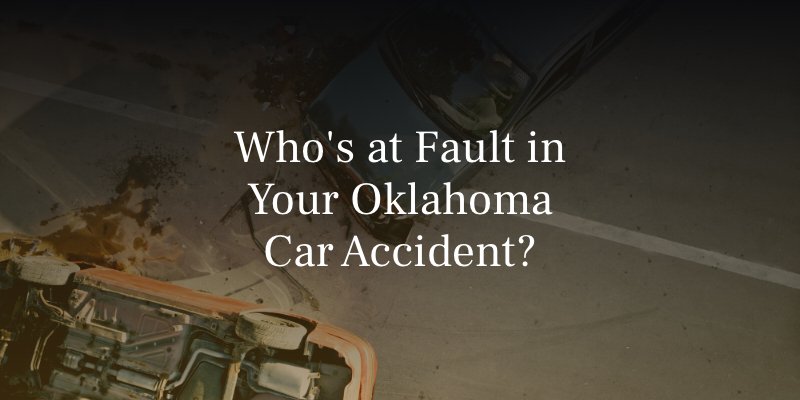Being involved in a car accident in Oklahoma can be extremely stressful when questions of fault arise. Determining who caused the crash is one of the most important factors in deciding who pays for medical bills, lost income, pain and suffering, and other damages. Unlike some states that rely on no-fault systems, Oklahoma follows a fault-based model, meaning that liability must be established before compensation can be awarded.
Learning about how fault is determined and what evidence is considered can help you better protect your rights after a crash. At Gorospe Law Group, we can help you navigate the claims process in Tulsa. Reach out to us today for a free consultation.
Oklahoma’s Modified Comparative Negligence Rule
Oklahoma, like many other states, uses a legal principle known as modified comparative negligence. This rule allows more than one party to share responsibility for a crash. If you are found partly at fault, your settlement or court award will be reduced by your percentage of blame.
For example, if you were awarded $50,000 but deemed 10% responsible, your recovery would be reduced to $45,000. Importantly, if you are found 51% or more at fault, you cannot recover any compensation at all. Since fault directly impacts compensation, it often includes the average car accident settlement in Oklahoma, which heavily depends on the circumstances of each case.
Insurance companies are aware of this system and often try to pin the blame on the accident victim so that they won’t have to pay their claim. As a result, it can be critical to have a lawyer on your side to respond to allegations like this appropriately.
What Kinds of Evidence Are Used To Establish Fault?
Determining liability in a car accident case is not a matter of opinion; it relies on evidence. Some of the types of proof that can be used include:
- Police reports filed at the scene
- Photographs or video footage
- Witness statements from people who saw the crash happen
- Expert testimony from accident reconstruction specialists
- Cell phone records, which can help prove distracted driving
- Medical records linking injuries directly to the collision
Collecting and preserving this evidence as early as possible is crucial. Without strong documentation, it becomes easier for the insurance company to dispute your version of events.

Common Factors That Contribute to Car Accident Liability
Car accidents in Oklahoma are often caused by negligent or reckless driving behaviors. Some of the most common factors that can establish fault include:
- Speeding or aggressive driving
- Distracted driving, such as texting behind the wheel
- Running red lights or ignoring stop signs
- Drowsy driving
- Failing to yield the right of way
- Driving under the influence of alcohol or drugs
- Following too closely or tailgating
Each of these actions can play a role in assigning fault, either entirely to one driver or shared among multiple parties.
Contact Gorospe Law Group for a Free Consultation
Determining fault in an Oklahoma car accident is rarely straightforward, especially with the state’s modified comparative fault law in mind. If you’ve been involved in a crash, it may be in your best interest to hire an accident attorney who can help maximize the value of your claim and push back against accusations of blame.
Contact a car accident lawyer with Gorospe Law Group today for a free consultation. We’ll make your case our priority from the start.